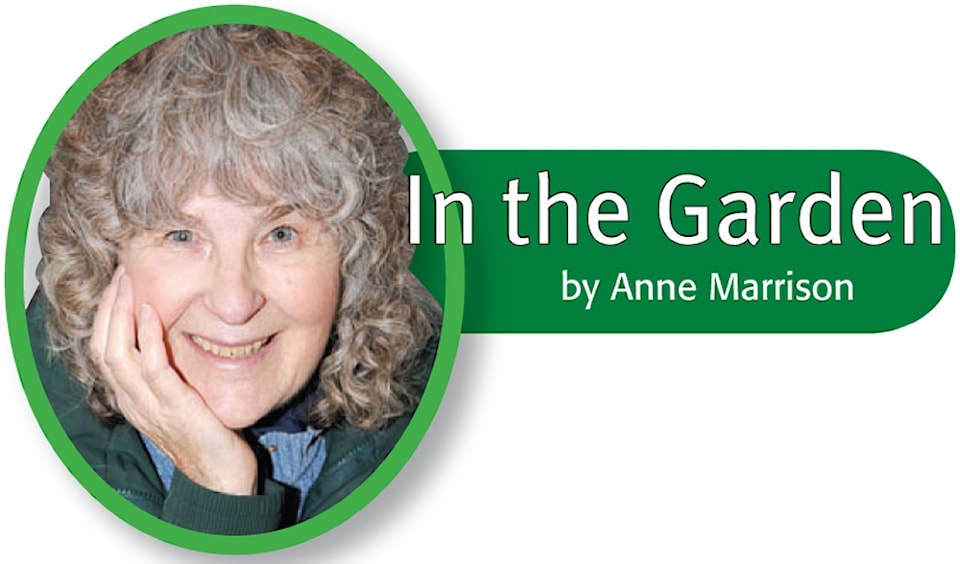It’s the time when gardeners begin quickly clearing winter’s debris before lawn-mowing starts – and suddenly, composters seem far too small.
But people with compost boxes can use those blown twigs and snipped-up shrub prunings as an aerating layer between the weeds and kitchen waste, or as a good base in new compost areas.
Winter mulches should be removed to make room for planting.
Also, the slug eggs underneath need to be exposed to birds.
The leafy and grass-clipping mulches (plus baby slugs) are best put on the compost. This is the one place where slugs belong – those critters are very good at breaking down green material.
Outside, it’s time to plant peas, broad beans, arugula, corn salad, and radishes.
Inside, you can start brocolli, cabbage, kale, celery, lettuce, and sweet onions. A heat mat is useful for speeding up germination, but the top of a refrigerator is also a useful warm spot.
Peppers need to be started early inside, because they’re not fast growers.
Tomatoes, zucchini and squash are quick. That’s why their timing is a gamble – because they germinate and grow quickly, it’s not hard to get into a situation where they’ve got so huge you have to do something, but it’s still too cold to put them outside.
Heavy feeders like squash, zucchini, tomatoes, and corn benefit from beds topped up with nutrients, which could be organic fertilizer or compost or manure.
Compost is also a good mulch for flower beds. Some gardeners fertilize flower beds every year or two, and top with bark mulch to deter weeds.
Hardy annuals that can be sown outside now include calendulas, annual poppies, Nigella, larkspur, and alyssum.
As soon as we can be sure frost won’t return, nasturtiums, cosmos, and phacelia can follow them.
Trees and shrubs can still be planted, but with spring plantings, it’s important to be sure you can water them regularly through hot summers. The new plantings need extra water for at least the first year.
Red-stemmed and yellow-stemmed dogwood need hard pruning if you want to focus on bright winter stems. Some people cut them back every two years, for bright stems one year, followed by white flower clusters and blue-coloured berries for the red twig forms, and white berries for the yellow-twig kinds.
Witch-hazel doesn’t respond well to pruning. Cut branches tend to shoot out in weird directions. Worse, if pruning is necessary, the rootstock can be stimulated enough that numerous suckers shoot up.
Small suckers can be permanently removed by being pulled away. But large suckers must be cut, and that often promotes permanent re-shooting.
Most potted spring-blooming bulbs can now be planted out in the garden. Hyacinths are especially useful, since they are reliable bloomers and can handle shade.
By now, snowdrops will have finished flowering, and if they’re due to be transplanted (or potted up for plant sales), this is the ideal time.
News flash: The Alpine Garden Club of B.C.’s spring show and sale will take place noon to 4 p.m. on Saturday, April 6, in the Floral Hall, VanDusen Gardens, 5251 Oak St., Vancouver. Free admission. Sales are cash or cheque only.
